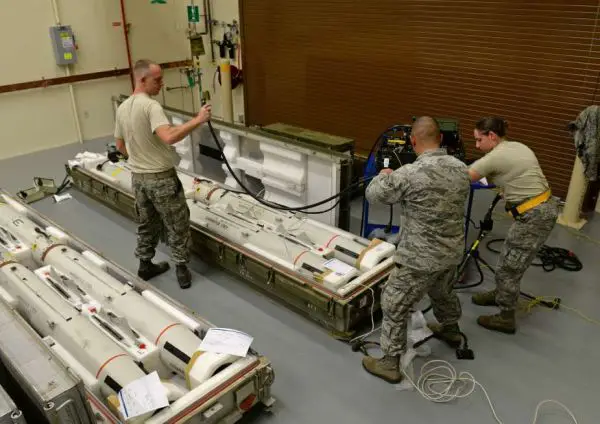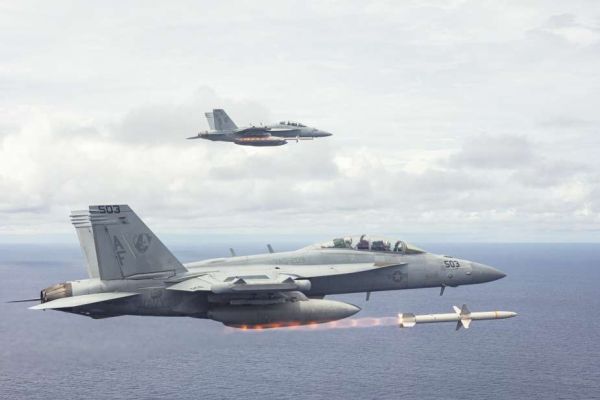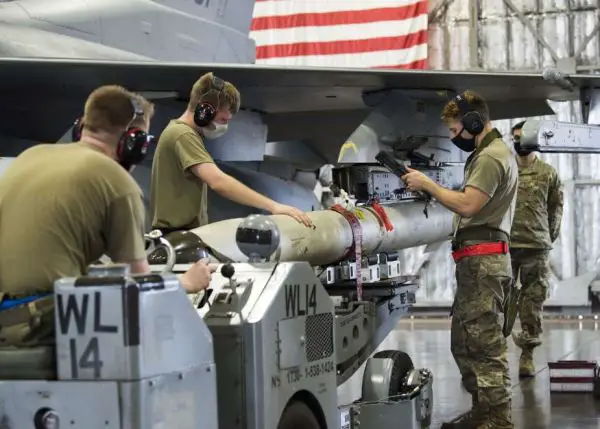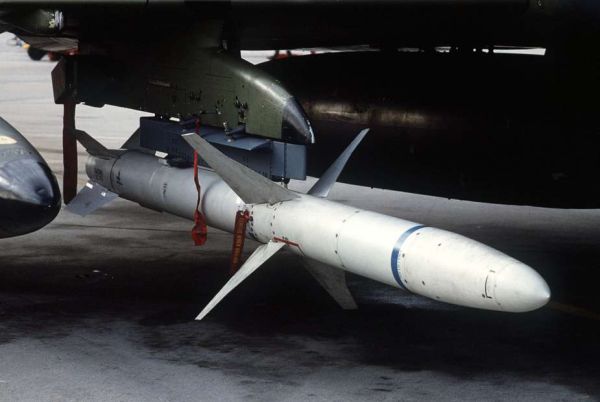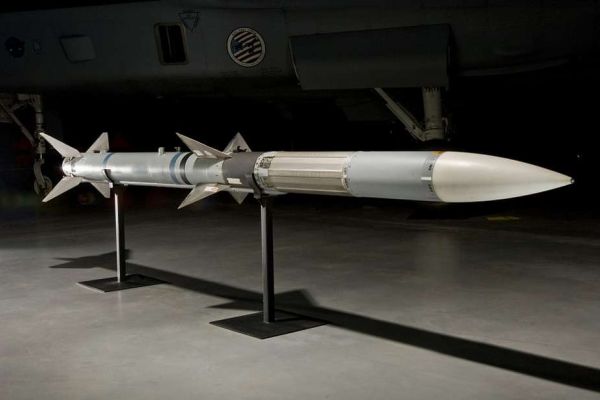Tactical Missiles.
AGM-88 AGM-88E HARM.

The AGM-88 HARM (High-speed Anti-Radiation Missile) is a highly advanced air-to-surface missile engineered to target and destroy enemy radar systems, particularly those used for air defense. Due to its precision, speed, and capability to neutralize radar-guided threats, it is a critical asset in modern military operations, especially for suppression of enemy air defenses (SEAD) missions. The missile plays a vital role in ensuring air superiority by reducing the effectiveness of enemy radar and missile systems, thereby protecting friendly aircraft.
Country users: Australia, Bahrain, Egypt, Germany, Greece, Israel, Italy, Kuwait, Morocco, Qatar, Saudi Arabia, South Korea, Spain, Taiwan, Türkiye, Ukraine, United Arab Emirates, United States
Description
The AGM-88 HARM was developed by the U.S. Company Texas Instruments, now a part of Raytheon Technologies, in collaboration with the U.S. Department of Defense. The missile's seeker technology was significantly advanced with the contributions of Northrop Grumman. The development of the AGM-88 began in the late 1970s, with the first models being produced in the early 1980s. The missile officially entered service with the United States Air Force in 1985, replacing earlier anti-radiation missiles like the AGM-45 Shrike and AGM-78 Standard ARM. Its main use is in SEAD (Suppression of Enemy Air Defense) missions, where it targets enemy radar installations to protect friendly aircraft from radar-guided threats, making it a versatile weapon in various electronic warfare scenarios.
Since its inception, the AGM-88 HARM has proven itself in numerous military operations, consistently demonstrating its value in electronic warfare and air superiority missions. It was first operational with the U.S. Air Force in 1985 and has been deployed in several major conflicts, including the Gulf War, where it played a significant role in neutralizing Iraqi radar installations. It was also used during Operation Allied Force and other military campaigns, showcasing its reliability and effectiveness. The missile's success has led to its adoption by multiple nations worldwide, reflecting international trust in its capabilities and confirming its status as a staple in modern military arsenals.
The AGM-88 HARM's mission profile is designed for efficiency and precision, enhancing the effectiveness of SEAD operations and supporting overall mission success. It engages targets quickly, limiting enemy response time, and effectively acquiring and tracking radar emissions for reliable neutralization of threats. Its operational flexibility allows it to be used in various mission types, from defensive suppression to offensive pre-emptive strikes, ensuring comprehensive electronic warfare capabilities.
AGM-88 HARM variants:
- AGM-88E AARGM: The AGM-88E Advanced Antiradiation Guided Missile (AARGM) features an upgraded guidance section and a modified control section, while still utilizing the rocket motor, warhead, wings, and fins from the AGM-88 HARM. It employs millimeter-wave radar for precise terminal guidance, effectively countering the enemy's ability to shut down radar systems. Additionally, it can transmit images
of the target before impact.
- AGM-88F HCSM: Raytheon developed an updated version of the HARM, called the AGM-88F HARM Control Section Modification (HCSM). This modification was tested in collaboration with the US Air Force, which eventually adopted it. The upgrade includes enhancements such as satellite and inertial navigation controls, which are designed to minimize collateral damage and reduce the risk of friendly fire.
- AGM-88G AARGM-ER: In September 2016, Orbital ATK introduced the AARGM-ER, which features a redesigned control section and an 11.5-inch (290 mm) diameter rocket motor that doubles its range. This missile is designed for internal carriage on the Lockheed Martin F-35A and F-35C Lightning II, with plans for integration on the P-8 Poseidon, F-16 Fighting Falcon, and Eurofighter Typhoon. However, internal carriage on the F-35B is not possible due to internal space limitations. The new missile, designated AGM-88G, uses the AARGM's warhead and guidance systems within a new airframe, which replaces mid-body wings with aerodynamic strakes along the sides. Control surfaces have been moved to low-drag tail surfaces, and the missile includes a more powerful propulsion system, offering greater speed and double the range of its predecessor. It weighs 1,030 pounds (467 kg) and is slightly shorter than earlier variants at 160 inches (4.06 meters) in length.
Technical Data
-
Design
The AGM-88 HARM has a streamlined cylindrical body designed for high-speed engagements. It is equipped with four rear-mounted wings and a control section near the nose for aerodynamic stability. The missile measures approximately 13 feet 8 inches (4.17 meters) in length, with a diameter of 10 inches (0.254 meters) and a wingspan of 3 feet 7 inches (1.11 meters). Weighing around 800 pounds (360 kilograms), its modular design allows for upgrades and adaptations to meet evolving threat environments.
-
Warhead
The AGM-88 missile is equipped with a high-explosive fragmentation warhead designed to destroy radar installations and electronic equipment. The warhead weighs approximately 150 pounds (68 kilograms) and is optimized to maximize damage to radar arrays, communication equipment, and control centers. This makes it effective against both fixed and mobile radar targets, ensuring adaptability in various combat scenarios.
-
Propulsion
The AGM-88 HARM uses a solid rocket motor for propulsion, enabling it to reach supersonic speeds of up to Mach 2. The propulsion system provides the necessary thrust for long-range engagements, with the missile capable of reaching distances of over 30 miles (approximately 48 kilometers). This design ensures rapid engagement, minimizing enemy reaction time to deactivate radar systems.
-
Guidance Systems
One of the most advanced features of the AGM-88 HARM is its guidance system. It employs a passive radar seeker head that detects, targets, and homes in on radio frequency emissions from radar systems. This capability allows the missile to autonomously track and destroy radar sources even if they are turned off post-launch, a feature that distinguishes it from older anti-radiation missiles. The guidance system also includes programmable target priority settings, enabling the missile to adapt to complex battlefield environments and changing threat landscapes, providing higher precision and autonomous tracking capabilities.
-
Combat Use
The AGM-88 HARM is typically launched from various platforms, including fighter jets like the F/A-18 Hornet, F-16 Fighting Falcon, and F-35 Lightning II. Its primary role is to suppress enemy air defenses by destroying radar installations, SAM sites, and other electronic warfare systems. It is particularly effective in environments where the enemy relies heavily on radar for targeting and coordination. The missile's ability to home in on radar emissions makes it an indispensable tool for SEAD missions, allowing friendly forces to operate with greater freedom and reduced risk from enemy air defenses. Beyond SEAD missions, the AGM-88 can also be deployed in pre-emptive strikes against known radar sites, disabling them before enemy forces can react, offering strategic advantages in warfare.
Specifications
-
Type
Air-to-surface anti-radiation tactical missile
-
Country users
Australia, Bahrain, Egypt, Germany, Greece, Israel, Italy, Kuwait, Morocco, Qatar, Saudi Arabia, South Korea, Spain, Taiwan, Türkiye, Ukraine, United Arab Emirates, United States
-
Designer Country
United States
-
Propulsion
Thiokol dual-thrust rocket motor
-
Launch Weight
360 kg
-
Range
Up to 48 km
-
Speed
Mach 2.9
-
Aircraft launcher
F/A-18 Hornet, F-16 Fighting Falcon, and F-35 Lightning II.
-
Guidance
Passive radar homing with home-on-jam, additional GPS/INS and millimeter-wave active radar homing in the E and G variants
-
Warhead
WAU‐7/B blast‐fragmentation warhead
-
Dimensions
Length: 4.14 m ; Diameter: 0.254 m; Wingspan: 0.1016 m


























